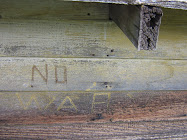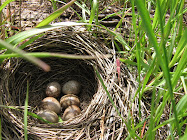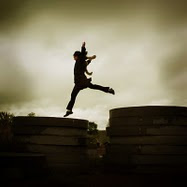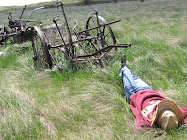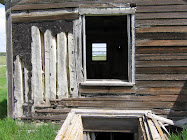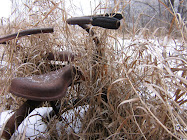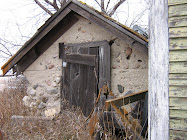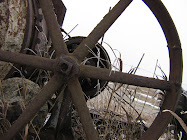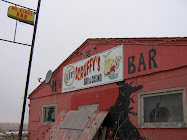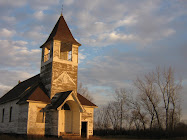From "Ruth's Fables"
By Ruth Shoger Zurbrigg and Karen Van Fossan, her granddaughter
In memory of Grandma Z
Would you like to hear the story of the runaway horses? It began (like so much of my life) with piano lessons.
I had a very fine piano teacher when I was about eight years old. She was Mrs. Wernicke, a German lady. Before I took these formal lessons, my mother had taught me to play hymns from the old pump organ. But after my father presented my mother with a new piano, arrangements were made for me to take lessons from Mrs. Wernicke! I hummed all day when I heard the news. (I still had to do chores, of course, but couldn't I hum a little while gathering eggs?)
Well, naturally, I was quite insulted when Mrs. Wernicke had me start in the Beginners Book. It was much too easy for Ruth Shoger! But she taught me more about technique, keeping fingers curled, and other important matters. With her persistence, I was able to finish Book Number One during the first summer (thank goodness).
My younger sister Lucile and I took lessons from her for several summers. Since Mrs. Wernicke lived in Aurora, Illinois, and we did not – our dear Aunt Carrie opened her house in Oswego for lessons one day a week. Also, we studied with others, one being Mrs. Marshall Updike. We were fortunate to have so much music in our lives. (At least I thought so.)
Sometimes I had to walk two miles to the house where the lessons were being given – and several times walk home, too. Many bushes and weeds grew on either side of the gravel road. I walked as fast as I could. I could just imagine all the slippery snakes, waiting among the grasses for my ankle.
Mrs. Wernicke herself often walked through our little town of Oswego, in order to take the street car back to Aurora. One afternoon, she walked past our home, carrying an open umbrella. Umbrellas were not only for rain in the 1920s. Umbrellas could keep out a little heat and a quite a bit of sun.
At this particular time, my father happened to be on the road as well. He drove a team of horses, Bell and Switchtail, in the opposite direction – in the direction Mrs. Wernicke was coming from. They pulled a small cultivator up, up, up the hill.
Well, Bell and Switchtail saw this lady and her strange umbrella. And oh, my! They ran ahead, willy nilly – the cultivator clanging and clashing behind them. Panicked, my father chased behind them up the hill. He was certain Mrs. Wernicke would be flattened beneath their hooves.
Poor Mrs. Wernicke!
Well, thankfully, no one was hurt – not even Mrs. Wernicke's umbrella.
But the horses! Where had they gone? Had they been bitten by a snake? Caught on a lonely fencepost? Run over by the cultivator?
No, indeed, they hadn't. After such commotion, Bell and Switchtail finally stopped at the water tank. They stood there, with their front feet soaking in the water.
The moral of the story? Everybody feels the heat sometime.
Monday, March 31, 2008
Monday, March 10, 2008
Love and B.S.
From "Hospital Memoirs: Love and B.S."
In memory of Grandpa Van (Feb. 22, 1923 -- Nov. 29, 2006)
By Karen Van Fossan, copyright 2008
January 2, 2005
My grandpa's life may pass at any moment. I know this, and so does he.
Once a merciless teaser, he strains to lift his head and even speak.
“I hope you can sort out the B.S. from the love,” my grandpa says. He drops his head to the pillow. He turns to find my eyes.
I say, “I can.”
February 2, 2005
Sometimes Grandpa speaks. Sometimes he only mouths the words, and I am left to read lips. The words I've learned so far: Orange juice. Water. Carmex.
The ventilator dries my grandpa out. But any liquids could choke him. So Carmex is as close to satisfaction as he can get.
He moves his crackling lips.
Ever diplomatic, I ask, “Would you like a little Carmex?”
Could be, he's fallen asleep again. I wait, ever waiting.
He mouths the words, “I'd rather have a beer.”
His eyes dance. And I throw back my head. And both of us are laughing.
February 8, 2005
Grandpa opens his eyes, and I look up.
“Grandpa, I'm going to send a note to Patty. You know – Patty. Is there anything you'd like me to say?”
He motions with his head like, No, not really.
We're quiet a while.
“I just don't feel that I've lived a full life."
“You're ready for more life?” I ask.
“A better life," he says.
He drifts again. I watch the geese preening out the window.
“There's so much I know now that I didn't know before,” he says. “I could live a much better life.”
February 8, 2005, Later
“I'm trying to get better,” he says.
“You're getting better?” I ask.
He says, “Trying to.”
February 10, 2005
When he speaks, he pushes air with each sound, pushing hard to be heard. He could ruin his vocal chords, the medical people tell him; he oughtn't try to speak.
But life, to my grandpa, is conversation. So here it is.
“Do you hear that?” Grandpa says.
“Yes,” I say. I wait.
The ventilator hums and rumbles and, lately, has started revving.
“What's it sound like to you?” I ask.
“A mo...” he says. “A motorcycle...It gets me up and gets me started.”
I ask, “Ever think you'd be riding motorcycle at age 81?”
Grandpa is grinning.
February 10, 2005, Later
Grandpa peers around, but does not see me.
“I'm here beside you, Grandpa,” I say.
He asks me, “Size what???”
“I'm beside you,” I say. “I'm with you.”
“Well, good...You better hurry.”
“I'll hurry,” I say, “if you hurry.”
Grandpa smiles wide. I see his toothless gums. He says, “Bless your heart.”
In memory of Grandpa Van (Feb. 22, 1923 -- Nov. 29, 2006)
By Karen Van Fossan, copyright 2008
January 2, 2005
My grandpa's life may pass at any moment. I know this, and so does he.
Once a merciless teaser, he strains to lift his head and even speak.
“I hope you can sort out the B.S. from the love,” my grandpa says. He drops his head to the pillow. He turns to find my eyes.
I say, “I can.”
February 2, 2005
Sometimes Grandpa speaks. Sometimes he only mouths the words, and I am left to read lips. The words I've learned so far: Orange juice. Water. Carmex.
The ventilator dries my grandpa out. But any liquids could choke him. So Carmex is as close to satisfaction as he can get.
He moves his crackling lips.
Ever diplomatic, I ask, “Would you like a little Carmex?”
Could be, he's fallen asleep again. I wait, ever waiting.
He mouths the words, “I'd rather have a beer.”
His eyes dance. And I throw back my head. And both of us are laughing.
February 8, 2005
Grandpa opens his eyes, and I look up.
“Grandpa, I'm going to send a note to Patty. You know – Patty. Is there anything you'd like me to say?”
He motions with his head like, No, not really.
We're quiet a while.
“I just don't feel that I've lived a full life."
“You're ready for more life?” I ask.
“A better life," he says.
He drifts again. I watch the geese preening out the window.
“There's so much I know now that I didn't know before,” he says. “I could live a much better life.”
February 8, 2005, Later
“I'm trying to get better,” he says.
“You're getting better?” I ask.
He says, “Trying to.”
February 10, 2005
When he speaks, he pushes air with each sound, pushing hard to be heard. He could ruin his vocal chords, the medical people tell him; he oughtn't try to speak.
But life, to my grandpa, is conversation. So here it is.
“Do you hear that?” Grandpa says.
“Yes,” I say. I wait.
The ventilator hums and rumbles and, lately, has started revving.
“What's it sound like to you?” I ask.
“A mo...” he says. “A motorcycle...It gets me up and gets me started.”
I ask, “Ever think you'd be riding motorcycle at age 81?”
Grandpa is grinning.
February 10, 2005, Later
Grandpa peers around, but does not see me.
“I'm here beside you, Grandpa,” I say.
He asks me, “Size what???”
“I'm beside you,” I say. “I'm with you.”
“Well, good...You better hurry.”
“I'll hurry,” I say, “if you hurry.”
Grandpa smiles wide. I see his toothless gums. He says, “Bless your heart.”
Sunday, March 9, 2008
Seven Working Principles of Peace Theater
Peace Theater happens in kitchens and kayaks, cross-country trains and street corners, wherever people tell an honest story and allow these stories to transform them. Peace Theater is an invitation to wholeness, a reinvention of the ancient traditions in our blood. It is a sacred and a literal place to gather – like the village green or tribal dance, an opportunity to see and be seen, to create and be created.
1. Roots: We are rooted in our community, our ancestry, and history.
2. Longing: We speak to, and from, our collective desires for connection, meaning, and presence.
3. Authenticity: We tell truths as we know them, writing within the real-life contexts of body, river, soil, and air.
4. Compassion: We find how to love each character we present, even though that character may challenge us to our core.
5. Voice: We honor the voices around us, attuning to the mysteries within them.
6. Vision: We offer transformative art, a re-imagination of the stories of our lives.
7. Surrender: We surrender the drive for success, devoting ourselves to the sacredness of the creation and the creating.
1. Roots: We are rooted in our community, our ancestry, and history.
2. Longing: We speak to, and from, our collective desires for connection, meaning, and presence.
3. Authenticity: We tell truths as we know them, writing within the real-life contexts of body, river, soil, and air.
4. Compassion: We find how to love each character we present, even though that character may challenge us to our core.
5. Voice: We honor the voices around us, attuning to the mysteries within them.
6. Vision: We offer transformative art, a re-imagination of the stories of our lives.
7. Surrender: We surrender the drive for success, devoting ourselves to the sacredness of the creation and the creating.
Saturday, March 8, 2008
Recommended Reading
If you're looking for Peace Words or Peace Books, here are a few recommendations. (Last update 7-1-09)
Novels for Adults
* The Bean Trees by Barbara Kingsolver; HarperPerennial; 1988.
* The Book of Dead Birds: A Novel by Gayle Brandeis; HarperCollins; 2003.
* Correcting the Landscape by Marjorie Kowalski Cole; HarperCollins; 2005.
* The Echo Maker by Richard Powers; Farrar, Straus, & Giroux; 2006.
* Kissing the Virgin's Mouth by Donna M Gershten; HarperCollins; 2001.
* PUSH by Sapphire; Vintage Contemporaries; 1996.
* The Red Azalea by Anchee Min; Berkley Books; 1995.
* A Yellow Raft in Blue Water by Michael Dorris; Warner Books; 1987.
Nonfiction for Adults
* An Autobiography or the Story of My Experiments with Truth by M. K. Gandhi; translated by Mahadev Desai; Navajivan; 1927/2005.
* The Chalice and the Blade: Our History, Our Future by Riane Eisler; Harper & Row; 1987.
* Getting in Touch: The Guide to New Body-Centered Therapies edited by Christine Caldwell; Quest; 1997.
* Getting Our Bodies Back: Recovery, Healing, and Transformation through Body-Centered Psychotherapy by Christine Caldwell; Shambahala; 1996.
* Peace: 100 Ideas by Joshua C. Chen & Dr. David Krieger; CDA; 2004.
* Practicing Peace in Times of War by Pema Chodron; Shambhala; 2006.
* When Elephants Weep: The Emotional Lives of Animals by Jeffrey Moussaieff Masson & Susan McCarthy; Delacorte; 1995.
Books for Young People
* After Tupac & D Foster by Jacqueline Woodson; GP Putnam's Sons; 2008.
* Annie on My Mind by Nancy Garden; Farrar, Straus and Giroux; 1982.
* Cool Women: The Thinking Girl's Guide to the Hippest Women in History edited by Pam Nelson; Girl Press; 1998.
* Elijah of Buxton by Christopher Paul Curtis; Scholastic; 2007.
* Hitler Youth: Growing Up in Hitler's Shadow by Susan Campbell Bartoletti; Scholastic; 2005.
* Holes by Louis Sachar; Frances Foster; 1998.
* Kira-Kira by Cynthia Kadohata; Atheneum/Simon & Schuster; 2004.
* Marie in the Shadow of the Lion by Jerry Piasecki; United Nations; 2001.
* The Miraculous Journey of Edward Tulane by Kate DiCamillo; illustrated by Bagram Ibatoulline; Candlewick Press; 2006.
* Peace Tales: World Folktakes to Talk About by Margaret Read MacDonald; Linnet Books; 1992.
* Rules by Cynthia Lord; Scholastic; 2006.
* Savvy by Ingrid Law; Dial; 2008.
Novels for Adults
* The Bean Trees by Barbara Kingsolver; HarperPerennial; 1988.
* The Book of Dead Birds: A Novel by Gayle Brandeis; HarperCollins; 2003.
* Correcting the Landscape by Marjorie Kowalski Cole; HarperCollins; 2005.
* The Echo Maker by Richard Powers; Farrar, Straus, & Giroux; 2006.
* Kissing the Virgin's Mouth by Donna M Gershten; HarperCollins; 2001.
* PUSH by Sapphire; Vintage Contemporaries; 1996.
* The Red Azalea by Anchee Min; Berkley Books; 1995.
* A Yellow Raft in Blue Water by Michael Dorris; Warner Books; 1987.
Nonfiction for Adults
* An Autobiography or the Story of My Experiments with Truth by M. K. Gandhi; translated by Mahadev Desai; Navajivan; 1927/2005.
* The Chalice and the Blade: Our History, Our Future by Riane Eisler; Harper & Row; 1987.
* Getting in Touch: The Guide to New Body-Centered Therapies edited by Christine Caldwell; Quest; 1997.
* Getting Our Bodies Back: Recovery, Healing, and Transformation through Body-Centered Psychotherapy by Christine Caldwell; Shambahala; 1996.
* Peace: 100 Ideas by Joshua C. Chen & Dr. David Krieger; CDA; 2004.
* Practicing Peace in Times of War by Pema Chodron; Shambhala; 2006.
* When Elephants Weep: The Emotional Lives of Animals by Jeffrey Moussaieff Masson & Susan McCarthy; Delacorte; 1995.
Books for Young People
* After Tupac & D Foster by Jacqueline Woodson; GP Putnam's Sons; 2008.
* Annie on My Mind by Nancy Garden; Farrar, Straus and Giroux; 1982.
* Cool Women: The Thinking Girl's Guide to the Hippest Women in History edited by Pam Nelson; Girl Press; 1998.
* Elijah of Buxton by Christopher Paul Curtis; Scholastic; 2007.
* Hitler Youth: Growing Up in Hitler's Shadow by Susan Campbell Bartoletti; Scholastic; 2005.
* Holes by Louis Sachar; Frances Foster; 1998.
* Kira-Kira by Cynthia Kadohata; Atheneum/Simon & Schuster; 2004.
* Marie in the Shadow of the Lion by Jerry Piasecki; United Nations; 2001.
* The Miraculous Journey of Edward Tulane by Kate DiCamillo; illustrated by Bagram Ibatoulline; Candlewick Press; 2006.
* Peace Tales: World Folktakes to Talk About by Margaret Read MacDonald; Linnet Books; 1992.
* Rules by Cynthia Lord; Scholastic; 2006.
* Savvy by Ingrid Law; Dial; 2008.
Picture Books
* A Book of Hugs written and illustrated by Dave Ross; Thomas Y Crowell; 1980.
* The Peace Book written and illustrated by Todd Parr; Little, Brown & Co; 2004.
* Somewhere Today: A Book of Peace written by Shelley Moore Thomas; photographs by Eric Futran; Albert Whitman & Co; 1998.
Subscribe to:
Comments (Atom)
